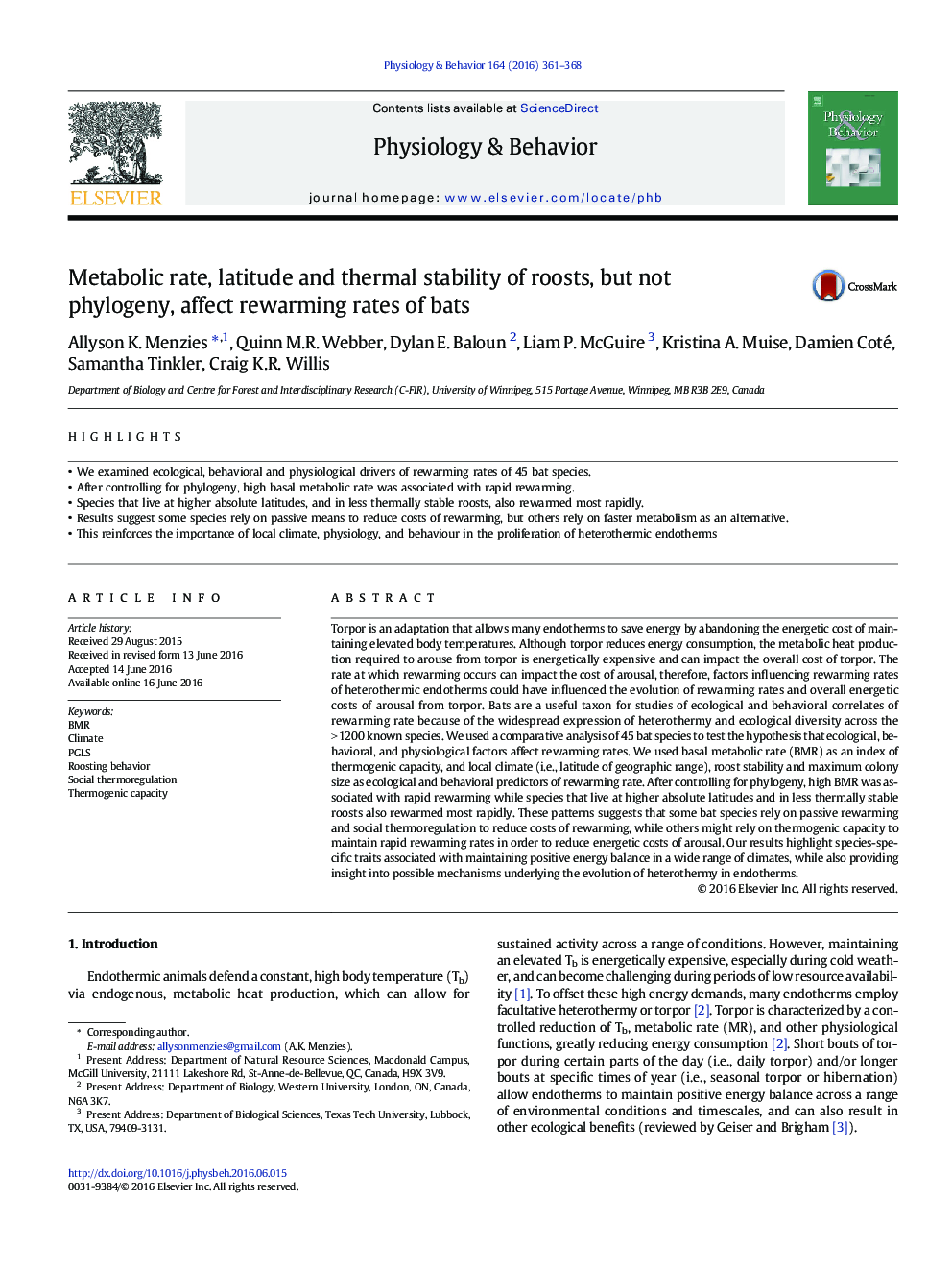| کد مقاله | کد نشریه | سال انتشار | مقاله انگلیسی | نسخه تمام متن |
|---|---|---|---|---|
| 5922648 | 1166279 | 2016 | 8 صفحه PDF | دانلود رایگان |
- We examined ecological, behavioral and physiological drivers of rewarming rates of 45 bat species.
- After controlling for phylogeny, high basal metabolic rate was associated with rapid rewarming.
- Species that live at higher absolute latitudes, and in less thermally stable roosts, also rewarmed most rapidly.
- Results suggest some species rely on passive means to reduce costs of rewarming, but others rely on faster metabolism as an alternative.
- This reinforces the importance of local climate, physiology, and behaviour in the proliferation of heterothermic endotherms
Torpor is an adaptation that allows many endotherms to save energy by abandoning the energetic cost of maintaining elevated body temperatures. Although torpor reduces energy consumption, the metabolic heat production required to arouse from torpor is energetically expensive and can impact the overall cost of torpor. The rate at which rewarming occurs can impact the cost of arousal, therefore, factors influencing rewarming rates of heterothermic endotherms could have influenced the evolution of rewarming rates and overall energetic costs of arousal from torpor. Bats are a useful taxon for studies of ecological and behavioral correlates of rewarming rate because of the widespread expression of heterothermy and ecological diversity across the >Â 1200 known species. We used a comparative analysis of 45 bat species to test the hypothesis that ecological, behavioral, and physiological factors affect rewarming rates. We used basal metabolic rate (BMR) as an index of thermogenic capacity, and local climate (i.e., latitude of geographic range), roost stability and maximum colony size as ecological and behavioral predictors of rewarming rate. After controlling for phylogeny, high BMR was associated with rapid rewarming while species that live at higher absolute latitudes and in less thermally stable roosts also rewarmed most rapidly. These patterns suggests that some bat species rely on passive rewarming and social thermoregulation to reduce costs of rewarming, while others might rely on thermogenic capacity to maintain rapid rewarming rates in order to reduce energetic costs of arousal. Our results highlight species-specific traits associated with maintaining positive energy balance in a wide range of climates, while also providing insight into possible mechanisms underlying the evolution of heterothermy in endotherms.
Journal: Physiology & Behavior - Volume 164, Part A, 1 October 2016, Pages 361-368
